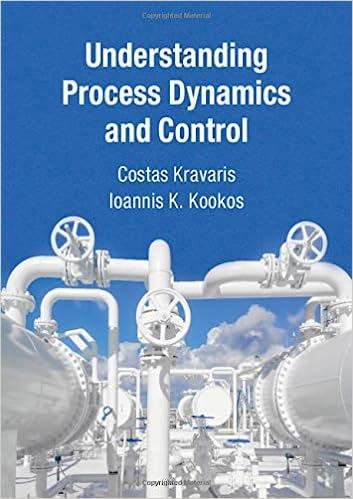Question
A small laboratory fixed bed 10.16 cm in diameter and 16 cm in length containing 600 g of activated carbon (C), has been used to
A small laboratory fixed bed 10.16 cm in diameter and 16 cm in length containing 600 g of activated carbon (C), has been used to adsorb n-butanol (B) from air containing 365 ppm of B. Measurements of the effluent concentration in terms of cout/cF as a function of time t are:
| Cout/cF | 0.0019 | 0.003 | 0.008 | 0.18 | 0.04 | 0.07 | 0.15 | 0.24 | 0.66 | 0.81 | 0.94 | 1.00 |
| t, hr | 5 | 5.5 | 6 | 6.5 | 7 | 7.5 | 8 | 8.5 | 10 | 11 | 12 | 13 |
Other pertinent data are: entering superficial gas velocity, us = 58 cm/s; T = 25C; P = 737 mm Hg; bed porosity, =0.456; average particle diameter, dp = 0.37cm; and butanol MW = 74.12 g/mol. A cylindrical vessel with an inside diameter of 2 ft and a height of 5 ft is available to conduct the adsorption on an industrial scale. The vessel can be packed with carbon to a 4 ft height. Plot the laboratory data and determine: (a) the mass velocity of the gas as it enters the bed in g gas/cm2 h, (b) the equilibrium loading of the carbon laboratory bed in g B/g C, and (c) the fraction of the laboratory bed utilied in the experiment if the breakthough time is taken at cout/cF = 0.05. For the industrial application calculate (d) the gas flow rate in kg/h for the same entering superficial velocity used in the laboratory experiment, (e) the fraction of the industrial bed that can be utilized, and (f) the estimated breakthrough time in h.
Step by Step Solution
There are 3 Steps involved in it
Step: 1

Get Instant Access to Expert-Tailored Solutions
See step-by-step solutions with expert insights and AI powered tools for academic success
Step: 2

Step: 3

Ace Your Homework with AI
Get the answers you need in no time with our AI-driven, step-by-step assistance
Get Started


